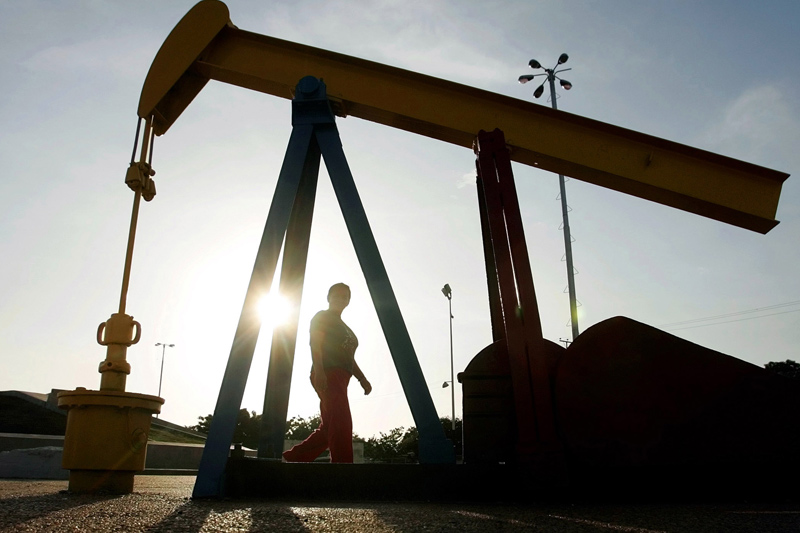By Scott DiSavino
Oct 5 (Reuters) - The U.S. oil drilling rig count fell for a third consecutive week even though crude prices hit four-year highs this week, as rising costs and pipeline bottlenecks in the nation's largest oil field have hindered new drilling since June.
Drillers cut two oil rigs in the week to Oct. 5, bringing the total count down to 861, General Electric (NYSE:GE) Co's GE.N Baker Hughes energy services firm said in its closely followed report on Friday. RIG-OL-USA-BHI
This is the longest streak of weekly cuts since October last year.
The U.S. rig count, an early indicator of future output, is higher than a year ago when 748 rigs were active when energy companies ramped up production amid higher prices. Since June, however, the number of rigs has stalled in the 860s.
The west Texas drillers that drove the shale revolution in the Permian basin have overwhelmed the region's infrastructure with oil production - driving up costs, depressing regional oil prices WTM- WTC-WTM and slowing the pace of growth. than half the total U.S. oil rigs are in the Permian, the country's biggest shale oil formation. Active units there declined by one this week to 485.
U.S. crude futures CLc1 this week rose to their highest since late 2014 ahead of planned U.S. sanctions on Iranian oil in November. West Texas Intermediate (WTI), the U.S. benchmark, was trading near $75 per barrel on Friday, putting the contract on track to rise for a fourth week in a row for the first time since January. O/R
So far this year, WTI has averaged $67.01, up from averages of $50.85 in calendar 2017 and $43.47 in 2016.
Looking ahead, crude futures were trading under $75 per barrel for the balance of 2018 CLBALst and near $74 for calendar 2019 CLYstc1 .
U.S. financial services firm Cowen & Co this week said the exploration and production (E&P) companies it tracks have provided guidance indicating an 18 percent increase this year in planned capital spending.
Cowen said the E&Ps it tracks expect to spend a total of $85.3 billion in 2018. That compares with projected spending of $72.2 billion in 2017.
Analysts at Simmons & Co, energy specialists at U.S. investment bank Piper Jaffray, this week forecast the average combined oil and natural gas rig count would rise from 876 in 2017 to 1,031 in 2018, 1,092 in 2019 and 1,227 in 2020.
Since 1,052 oil and gas rigs were already in service, drillers would only have to add a handful of rigs during the rest of the year to hit Simmons' forecast for 2018.
Year-to-date, the total number of oil and gas rigs active in the United States has averaged 1,020. That keeps the total count for 2018 on track to be the highest since 2014, which averaged 1,862 rigs. Most rigs produce both oil and gas.
<^^^^^^^^^^^^^^^^^^^^^^^^^^^^^^^^^^^^^^^^^^^^^^^^^^^^^^^^^^^ Graphic on U.S. rig counts
http://graphics.thomsonreuters.com/15/rigcount/index.html U.S./Canada natural gas rig count versus Henry Hub futures price
http://tmsnrt.rs/2eT9k44 Shale oil breakevens
http://tmsnrt.rs/2fO4b17
^^^^^^^^^^^^^^^^^^^^^^^^^^^^^^^^^^^^^^^^^^^^^^^^^^^^^^^^^^^>
